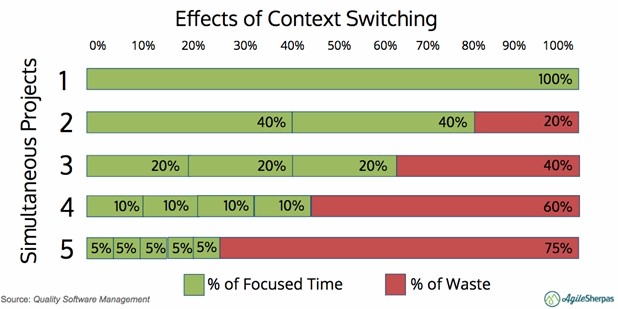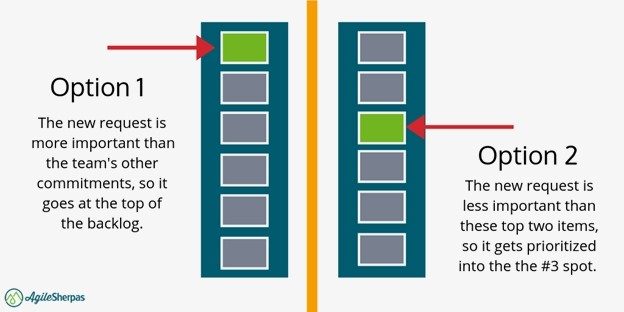When you imagine an Agile Marketing team, what words spring to mind? Chances are you're imagining marketers who are fast, flexible, and maybe even frenetic.
We tend to strongly associate agility with speed, but being agile doesn't mean being the fastest to chase the shiny object of the week. Teams that are truly agile are, above all, disciplined in their work execution.
Agile systems force marketers to make choices and tradeoffs. They prevent us from simultaneously tackling every conceivable tactic: They demand we stop starting everything and instead start finishing the important work.
Disciplined delivery is what allows Agile Marketing teams to be first to learn, iterate, and improve, not just the first to flail.
I discuss that concept in depth in my new book, Mastering Marketing Agility: Transform Your Marketing Teams and Evolve Your Organization, and I outline it here, in this article.
Being focused beats being fast
The list of all the marketing work we could be doing right now is endless. We have new channels to explore, new messaging to test, and new campaigns to launch—not to mention the multiple stakeholders to please and litany of recurring tasks every day/week/month/quarter.
But the hard truth is that when we try to do everything, we accomplish nearly nothing.
Jumping from project to project depending on who's yelling at us the loudest makes for a very busy, and very unproductive, day.
That's because we'll be burning much of our productive time on what's known as context-switching. It's the lag time of the human brain. Our brains don't jump instantly from one activity to the next; they need time to wind down one thing and spin up the next.
That downtime in the middle is a context-switching cost, and we all have to pay it.

The fewer things we're doing and the less waste we introduce into our day, the more we accomplish. That is true for individual work; at the team level, that truth is compounded.
If we have 20 projects active with a team, we're going to be burning a lot of our time on context-switching. When we focus on just a few things, however, we get them done much faster. Then we can move on to the next items on the list.
That is how Agile teams appear to be so fast and productive. They use focusing mechanisms like sprints or work-in-progress (WIP) limits to keep the number of active work items low.
They're not fast, per se; they're focused.
Stop starting, start finishing
Of course, limiting the number of things you're working on sounds nice, but what about all the people who bring work for Marketing to do?
As the bridge between the customer and the business, Marketing has a lot of groups to answer to.
When everybody needs something from Marketing RIGHT NOW, how can we marketers focus?
Disciplined Agile teams have a simple tool, known as the backlog, that serves as their queue of upcoming work. You can also think of it as a prioritized to-do list.
When work requests come in, that's where they go. They don't automatically get started right away.
The backlog is a filtering mechanism that allows the Agile team's leader to evaluate a new request against all the other work the team could be doing, and decide where the new item falls.
Maybe it's actually really valuable, urgent, and/or important, in which case it goes to the top of the list. Then, as soon as someone finishes one thing they're working on, they'll start on that high-priority item. On the other hand, the new request might be less impactful than other work the team has committed to. In that case, it's placed lower on the list.

That's not to say the team won't ever complete that lower-impact work. But if we accept EVERY request and start on it right away, we do a disservice to ALL our projects.
Context-switching costs are inevitable; and the more things we start right away, the greater those costs become.
So we apply discipline to our evaluation of incoming requests and use the backlog to visualize the priority of our queue of work.
Only with such rigorous consideration of the real value of what we're doing will we finally stop starting everything, and instead start finishing what really matters.
Inspect, adapt, iterate
The last crucial mindset shift that accompanies the disciplined execution of Agility concerns measurement. Instead of racing ahead to the next deadline, or racing to put out today's fire, marketers must take the time to pause, review the impact their previous work has had, and then act accordingly.
Sometimes that feels like slowing down, but only through the deliberate process of examination can we decide what's working and what's not. Then we can make the call to pivot away from ineffective effort and instead persist with those that are moving the needle.
Once again, that disciplined inspect-adapt loop is what makes Agile Marketing teams appear to be moving so fast. In reality, they're just making small, iterative improvements over time that compound into massive successes.
Speed is optional, disciplined agility is not
Agility is no longer an option. In the uncertain world we're all living in, we must be responsive and adaptive.
But what is optional is the obsession with speed.
We don't need to go faster, we need to proceed with discipline and deliberation. That's where real agility, and really effective marketing, comes from.




